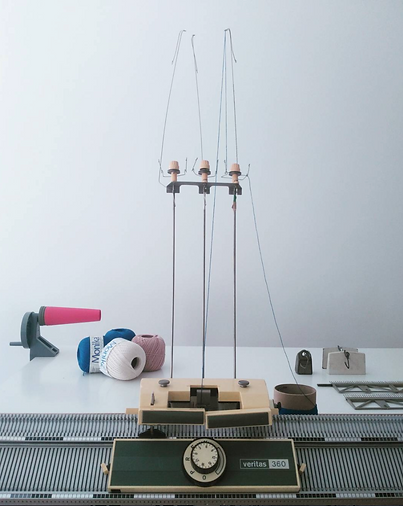top of page
ABOUT ME
Sustainability is the main priority for me. All collections are designed with a focus on natural fabrics and materials, simple but sophisticated cuts which give the garment a timeless look and the possibility to last in your wardrobe for many years, being passed from one generation to another.
I strongly admire textile crafts and traditional textile techniques. This influence came to me early, while studying at the Secondary Art School of Textile Crafts where I learned the techniques as hand embroidery, bobbing and needle lace, knitting and weaving. I try to apply this knowledge into my collections. The admiration of textile crafts is currently reflected in hand-knitted pieces in limited editions.
Care about waste made during the process of making a garment goes hand-in-hand with sustainability in fashion. Therefore the knitted pieces are made knit-to-shape, which reduces any cuts off of knitwear and all the sewn pieces are carefully designed and placed to minimise the scraps of fabrics. If any waste is made, I collect it and reuse it for other projects.


ABOUT MY WORK
All the garments and accessories are currently made in the private studio in Prague, Czech republic.
All the design and production is done by me, with additional input from friends and family.
All the samples are tested, washed and redesigned if something doesn’t work.
All scraps of fabrics and threads are collected for upcycling projects.
Papers of all kinds are used, always both sides. Received cardboard boxes are collected for reusing.
ABOUT MATERIALS
I mainly purchase materials made in Czech Republic and Slovakia but also from countries from all around Europe. I prefer to buy fabrics and yarns from smaller companies or artisans, to support their business. I am always open to source from another continent if it comes down to getting sustainable natural materials which don’t originally come from Europe, because they need different environment and climatic conditions to grow.

I would rather point out my appreciation for a specific material and why
I use it instead of writing down its chemical properties.
WOOL
Wool is simply an amazing natural fibre. It’s known for its positive properties such as self-cleaning, absorption and thermoregulation. The cells have a wax coating, which makes wool water repellent, but still allows the absorption of water vapour. The water-repellent surface makes wool garments naturally shower-proof and also reduces staining because spills don’t soak in easily. Wool has flexibility, elasticity, resilience and wrinkle recovery properties without any synthetic combination. Every wool is different on the touch, depending from which part of the world and from what kind of animal it came from. Therefore I love to use this material for its diversity. Both for knitting and sowing.
LINEN
Linen is historically the oldest and most sustainable plant fibre. Linen fibre has a very deep tradition in all Slavic countries, where it was used for daily and also for occasional clothing. Linen is biodegradable, anti-bacterial and naturally moth resistant. The linen material has thermoregulative features: it cools you down in the summer, it warms you up in the winter. The material naturally wrinkles, as the clothes sewn from it. Still, I find this material so positive and calming that once you fall in love with all the good properties the fibre offers, you fall in love with the wrinkles too. Its natural colours include ivory, ecru, tan and grey.
COTTON
Cotton is the most typical and widely used natural material. Cotton material has high absorbent properties. It’s easy to keep this fibre clean as it’s machine-washable. It doesn’t wrinkle as much as linen, but on the other hand the production of this fibre requires double amount of water. Therefore I use this material only for the knitted garments of the current collection.
BAMBOO
Bamboo fabrics or yarns are made of 100% bamboo pulp fibre. It feels very soft and comfortable on your skin. Natural anti/bacterial elements in the bamboo fibres keep bacteria away. Garments of bamboo fibre can absorb and evaporate human sweat very fast. Bamboo fibre is eco/friendly and biodegradable. Bamboo fabrics and yarns need less dyestuff than cotton, model or viscose.
I find this material very pleasant on the touch when using if for the knitted garments. Only thing I have to point out is that it takes longer time to dry if after hand washing.
SILK
Silk is a natural fibre which is known for its soft and light look, Silk fibre is a large protein reservoir, among the other things, up to 18 types of amino acids, some of which help to generate body cells. Chinese doctors say that wearing natural silk clothes (alone) positively affects the life of skin cells, it counteracts blood vessel formation and thus aging and some disease. Silk keeps you cool in the summer and warm in the winter.
If it comes to creating more occasional garment, I go for silk option. It feels very nice on the body and looks very glamorous itself. Classic silk like habutai, satin or crepe suit to every type of garment. Organza can be used as a transparent element or for full garment to unveil part or full body. Buret or dupion offers a rough uneven texture, a bit of silk rusticity.
bottom of page